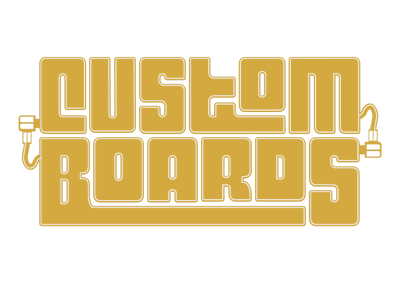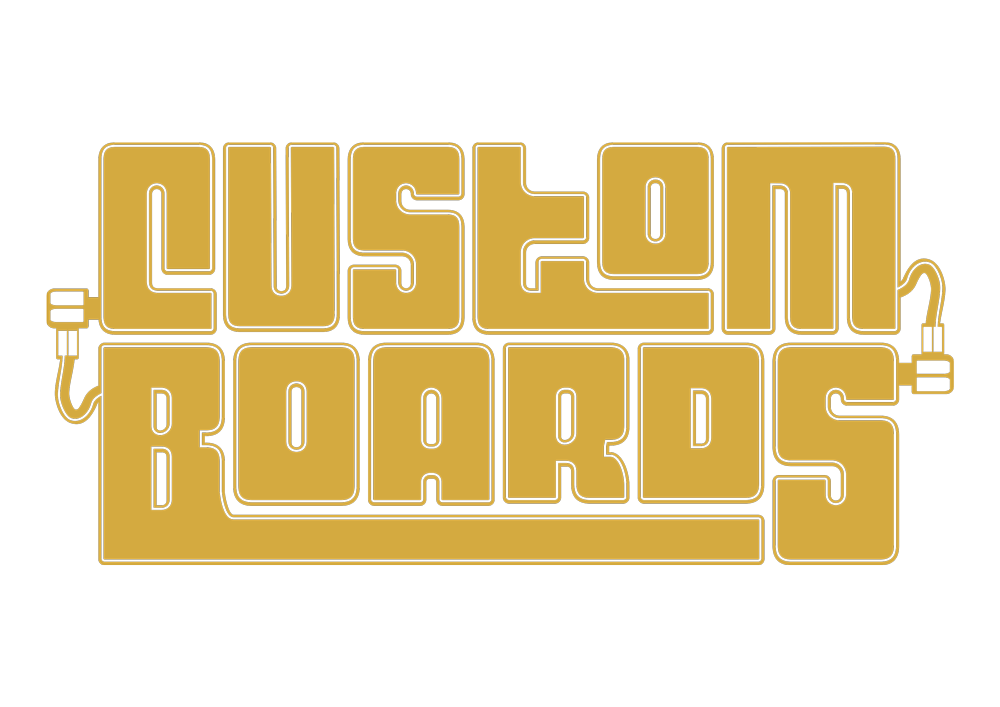Josh Homme’s pedals, amplifiers and guitars in the spotlight
July 10, 2013
In my view Josh Homme is the most impressive guitarist to emerge in the last couple of decades. Although he has polarised critics with some of his opinions and behaviour, Homme has managed to create his own genre in the early 1990s. Kyuss was a trailblazer in its time. The Queens of the Stone Age redefined Alternative Rock’s goalposts in the Noughties. Started as a side project, Them Crooked Vultures loosened up Homme’s very busy schedule and lifestyle. The album …Like Clockwork, released in 2013, was a very classy continuation of Homme’s excellent record releases.

At the start of his career, Homme was very loathe to disclose the pedals and backline he uses, fuelling endless speculation and guesswork. His work with Them Crooked Vultures saw him easing his restrictions a little bit. If you were up to a little detective work, chances were you’d be able to get a good idea of the man’s gear.
The full truth, though, can only be gleaned by having direct access. Guitar technicians often do like to help each other out. In 2010 I was lucky enough to work on the same festival stage as TCV, which gave me a chance to find out the details of Josh Homme’s pedals, amplifiers and guitars from his tech. The man’s choice of guitars has been well documented on the internet, in my opinion, but his pedals and amps are still somewhat shrouded in mystery.
Josh Homme’s rig in 2010 - Them Crooked Vultures
Josh Homme never uses a wireless, but instead always plugs into his pedalboard directly. Due to his use of many different tunings with TCV he switched guitars quite a lot during the set. Homme has been using a two pedalboards for a number of years already. The boards are placed each side of his microphone stand. It is important to note that his pedals are not connected in the order they have been placed in on the pedalboards.
Pedalboard on the right

- Dunlop Cry Baby Q-zone
- Fulltone Ultimate Octave
- Fulltone Fat Boost FB-3
- Vintage Morley Wah
- Electro Harmonix Octave Multiplexer
- Electro Harmonix Micro POG
Pedalboard on the left

- Dunlop Volume Pedal DVPI
- BOSS RE20 Roland Space Echo
- SIB Echo Drive
- Univox Super Fuzz
- Amp Channel/Reverb Switch
- Moogerfooger Lowpass Filter
- Moogerfooger Analog Delay
Signal routing
The signal from the pedalboards is sent to a splitter (Little Labs PCP Amp Distro Unit), which distributes the signal to three amplifiers. According to Josh’s tech, the man’s backline was always in flux. For example, the Supro Sportsman-head, seen in these photos, was not used on that show. The Gibson-combo seen on the right, too, was only carried as a spare.
Amplifiers
During that The Crooked Vultures tour, Josh Homme got his sound by using an assortment of strange vintage amps. Each amp was fed by different pedals for a cascade of gain stages, mostly by boosting and by equalising the signal in each amp’s preamp. When combined with Homme’s sprinklings of fuzz, wah-wah and different octavers, this resulted in a very broad and versatile tonal palette.

- A vintage Gibson EH-185 combo (1938) for crunch sounds. This is a true collector’s item, which few musicians would dare to drag out on the road.
- Teisco’s Checkmate 25 amp head, which was a cheap Japanese amp from the mid-Sixties. The preamp section was primed by a Boss EQ (on top of the amp) and a Fulltone Fat Boost.
- A Silvertone Tube Twin Twelve head – another cheapie from the Sixties. Jack White has also been spotted using this model.
- The cabinets were several Ampeg 2x12" units loaded with Vintage Celestions.
Josh Homme’s rig in 2013- Queens Of The Stone Age
QOTSA made a comeback in early 2013 after a longer hiatus. The result was the outstanding …Like Clockwork album. Homme’s rig had seen several changes compared to the previous tour. He used vintage Ampeg amplifiers. There were also some newcomers on the pedalboards.
Josh Homme’s tech carried a complete set of spare pedals, waiting at the side of the stage. If one effect would have broken down mid-set, he would have been able to replace it in a matter of seconds.
Pedalboard on the right

- Boss GE-7 EQ
- Stone Deaf PDF-1 Parametric Distortion Filter
- Fulltone Ultimate Octave
- Electro Harmonix Switchblade Plus
- Dunlop Cry Baby Q-zone
- Dunlop Rotovibe
- Digitech Whammy
This board carried two Custom Audio Electronix MC-403 power supply units, one being a spare.
Pedalboard on the left

- Dunlop Volume Pedal DVPI
- SIB Echo Drive
- BOSS RE20 Roland Space Echo
- Vintage Morley Wah
- Fuzzrocious The Demon (Modified to produce an upper octave)
- Electro Harmonix POG (The metal-coloured switch is an on/off-switch, which also protects the effect and the sliders)
- Korg Pitchblack (The red box below is a passive splitter, adding the board’s signal to the lines going to the amp)
This board carried two Voodoo Lab Pedal Power 2 Plus power supply units, one being a spare.
Signal routing
As on the previous TCV tour, the signal was distributed to the amplifiers using a Little Labs PCP Amp Distro Unit. On the QOTSA tour of 2013 this unit was, again, placed behind the backline.

Amplifiers

The signal was fed into two Ampeg VT-40 combos. This amp is often called the “poor man’s Twin Reverb”. The amps were set up for a basic “Stones-type” sound, meaning the amount of overdrive could be controlled with playing dynamics. The tech wasn’t sure what speakers were running inside the combos. The combos stood on top of two Greedtone RG212 2x12” cabinets, whose speakers were pointing upward at an angle of 45 degrees. Actually, these cabinets weren’t in use in 2013, their only function was to raise the combos to a correct height.
An interesting point were the large roadcase lids that had been placed behind the Ampegs. I had already seen this trick used in the Foo Fighters’ backline. The sound coming from the open combo’s back is reflected to the front, creating a more focused and directive sound.
Josh Homme’s guitars
Even though there is a lot of information on the net regarding the man’s guitars, here‘s a photo of Josh Homme’s guitars. His main instruments were Australian Maton Guitars and a Motor Ave Bel Aire.

Summary
What is it that makes Josh Homme’s guitar playing so special? I’d say it is his innovative and feel-based approach that puts pure technique on the back burner. His tonal mojo has a lot to do with playing hollow-body guitars into slightly overdriven amps. The fuzz-pedals are set close to feedback, while he combines different octave effects for versatility. Filters are also an important ingredient of Homme’s signature sounds. By boosting certain mid-frequencies intelligently he gets his guitar to punch through the mix. The same approach can also be heard on the …Like Clockwork album and the various liveshows that have been recorded after album's release.
In my opinion QOTSA were really on a roll back in 2013, and I can only hope that they do not spend another six years for making their next album.
10.7.2013 Kimmo Aroluoma
The writer is the owner of Custom Boards Finland. He is a veteran guitar tech who has toured for years with Finnish bands HIM, Amorphis, Michael Monroe, The Rasmus and Von Hertzen Brothers. Today he designs pedalboards and runs his own web shop in Helsinki, Finland.
Also in Custom Boards Blog

Ursus Factory and the Sixth Generation of Guitar Rock
June 10, 2021
I've been noticing clear signs of me turning into an “old fart” over the last few years. It’s only a few short months before I will turn 50, and it seems ever harder beam myself back into my 30-year old “hippy” state of mind. Am I – is Custom Boards – still a relevant player in the eyes of the new wave?

Revolutionizing the market - Lehle Components
May 09, 2020
German engineer Burkhard Lehle unveiled his plans for the Lehle Components a few years ago at 2014’s NAMM Show. He would release his own line of audio components, which will include brand-new designs alongside his older inventions.

Unforgettable Gigs – Part 1: Amorphis in the Balkans
April 27, 2020
Amorphis’ manager, Jouni Markkanen told me to be extremely careful, and made me clear that I had to have the gig fee in my hands, in cash, before allowing the band to leave their hotel for the venue.
Liity postituslistalle ja saa ajankohtaiset sisällöt suoraan sähköpostiisi.


